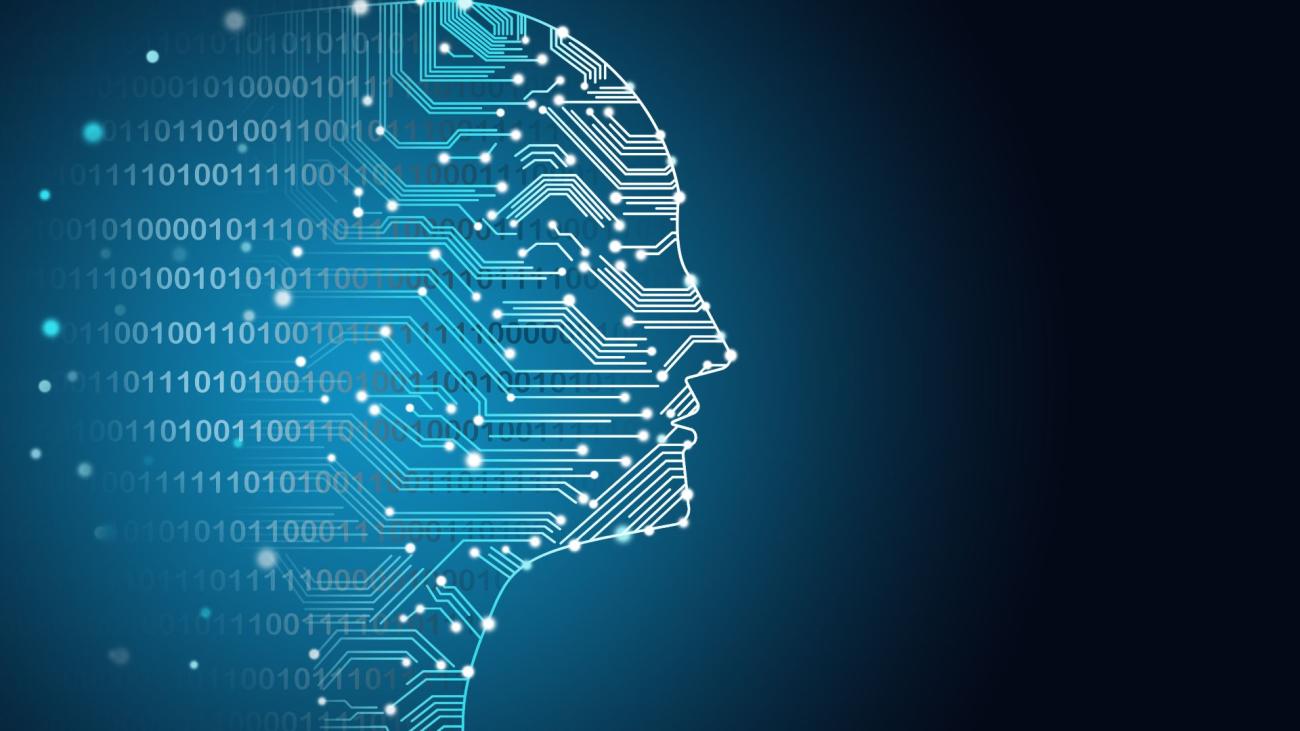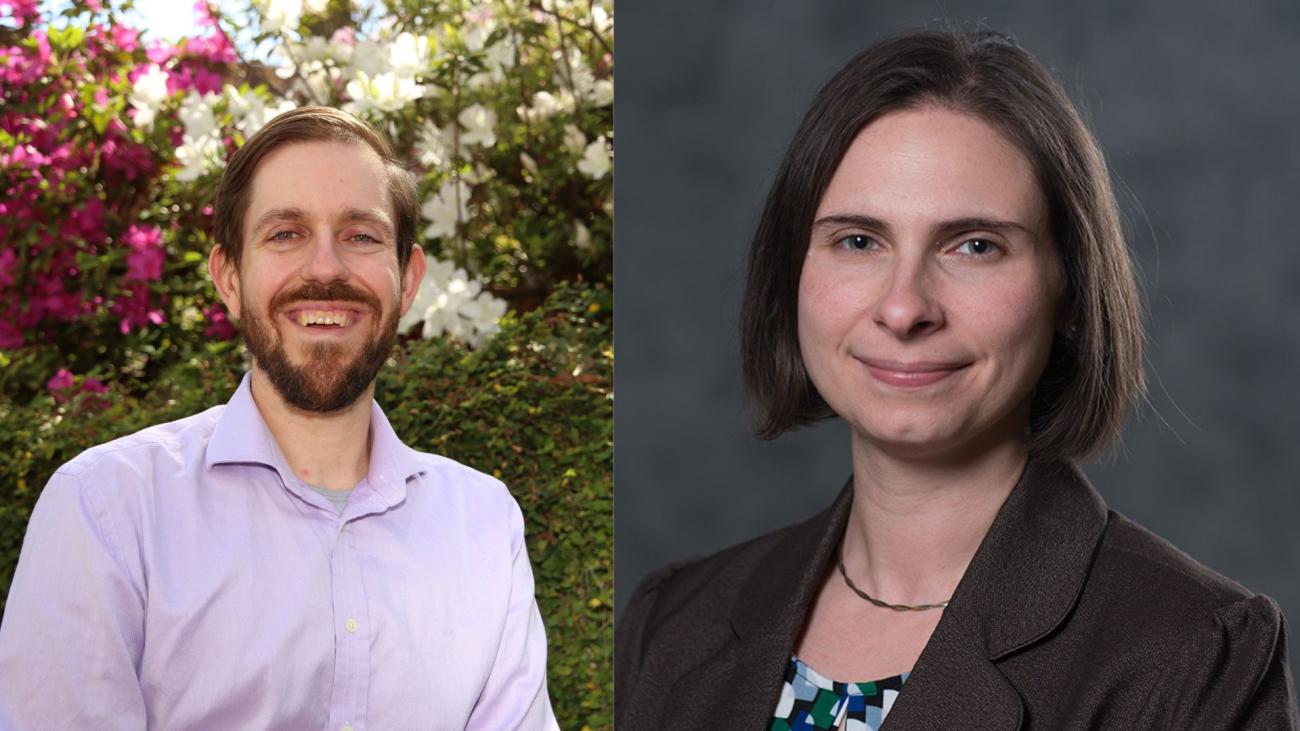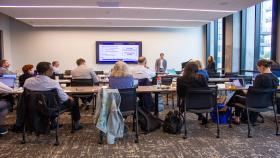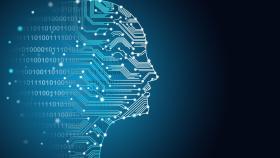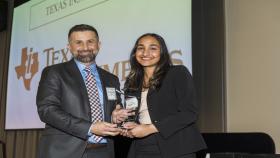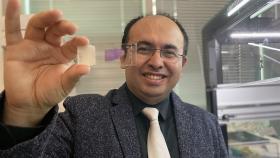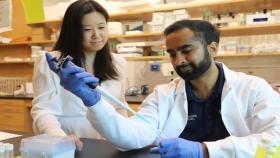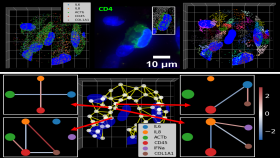Courses in the Wallace H. Coulter Department of Biomedical Engineering are being reformatted to incorporate AI and machine learning so students are prepared for a data-driven biotech sector.
In a Systems Physiology course, biomedical engineering students train a neural network to figure out what a human heart is doing. Using Electrocardiogram (ECG) data, they build models that can spot irregular rhythms. Until recently, courses in the Wallace H. Coulter Department of Biomedical Engineering included little coding.
But a new initiative looks to change that—and BME faculty including Dr. Laura Christian and Dr. Todd Fernandez, are initiating one of several efforts across the department to integrate data skills, coding and machine learning into BME’s core curriculum.
Instead of adding separate AI courses, faculty are embedding data skills directly into four required classes—grounding them in clinical challenges and engineering design decisions students are already learning to tackle.
“More and more in engineering, [students] use data. They use tools to make sense of data,” said Fernandez, who teaches in the department. “We can teach them to do it in a way that causes them to think with the tool, not transfer the responsibility of thinking to the tool.”
Christian said feedback from the BME Advisory Board spurred the decision to retool course curriculum, so students are trained early and often to code, manage data sets, and use AI and machine learning—critical skills that help engineers and researchers make informed decisions.
In an ECG exercise, for example, students analyze raw electrocardiogram data to diagnose atrial fibrillation—a condition where the upper chambers of the heartbeat irregularly. To do this, they revisit core concepts: what a normal ECG should look like, how electrical signals map onto physical contractions, and what it means when those signals go awry. Working in teams, they match cardiologist-level accuracy, identifying about 75% of cases by eye.
Using math, they then train a neural network on preprocessed ECG data where human eyes can hardly spot a difference—but the neural network reaches over 90% accuracy. “We ask the students, ‘Can you tell these signals apart?’ They say no. ‘Could a doctor?’ Also no,” Fernandez said. “But the computer can.”
Working with a neural network forces students to think critically about what human eyes see from how computers interpret patterns. “It’s easy to look at the parts of an ECG and see what’s right and wrong,” Christian added. “But generalizing that into a tool that can diagnose something? That’s hard.”
In the activity, students learn how to spot irregularities like a missing P wave, but they also begin to think about those abnormalities in mathematical terms—like entropy. “Tying ECG interpretation to entropy, and then to machine learning, helps them realize that this isn’t a separate skill set. It’s part of the same way of thinking,” Fernandez said.
The exercise pushes students to reframe what they know—not just seeing the heart as a biological organ, but also as an electrical signal, a physical system, and a mathematical pattern.
Fernandez added, “Students thought they understood the material—but it’s this activity that made it click. One student even said aloud, mid-lab, ‘I just realized the heart is an electric signal.’ These moments of realization are the goal. Not mastery over data, necessarily—but fluency and exposure.”
Across other courses, the data skill learned is different. In Biotransport, a math-heavy class on fluid dynamics, students use dimensional reduction to scale datasets with dozens of variables to just two or three dimensions that matter.
“At first, the dataset is overwhelming,” Christian said. “But learning to reduce it to the variables that matter—that’s a huge shift in how they think. It goes from chaos to clarity.”
That course and the dimensional reduction technique it teaches, she added, has become a stepping stone to more advanced electives like Dr. David Myers’ class on Translational Microsystems, and helps strengthen the connections between core and elective classes.
More than anything, though, these classes are about helping students get comfortable in uncomfortable territory. For some, it’s the first time they’ve tried to make sense of large-scale data. The discomfort is real—but temporary.
“There’s this learned response of ‘I don’t know how to do this,’” Fernandez said. “But that’s exactly what we’re trying to undo. We normalize coding. We make it manageable.”
And students are benefiting from it too. Saif Khan, a third-year BME student, said a recent Biotransport project—where students had to identify relationships within a simulated dataset—initially felt disconnected. It was difficult to relate the data to real world explanations, until he saw how it mapped to physical principles.
“I learned that data may look intimidating but by breaking it down, analysis tools can make it much more meaningful and digestible,” he said.
And in the process, BME students are also learning to play a unique role among their peers. Not just as engineers, but as translators who can bridge disciplines and translate the engineering that others want to do to what’s actually happening in the human body.
Part of becoming that kind of translator is learning what these tools are good at and where they fall short.
That’s the thinking behind another course module, this one in Cell Physiology, where students use AlphaFold, a Nobel Prize-winning machine learning tool that predicts protein structures.
At first, students design a short peptide to deliver a drug and use AlphaFold to see if the sequence they’ve created folds into the shape they predicted. In the second part of the activity, they work with full-length proteins that AlphaFold struggles to predict. They learn that the tool, while impressive, was trained on a limited dataset—and that its predictions break down when applied to protein families outside that scope.
“They see firsthand where the tool breaks,” Christian said. “And they start to ask the right questions. Why doesn’t it work here? What data is it missing? What assumptions is it making?”
Those questions are the real goal—not just learning to use a tool but learning to interrogate it. And learning that even the most powerful models have blind spots.
Latest BME News
Commercialization program in Coulter BME announces project teams who will receive support to get their research to market.
Courses in the Wallace H. Coulter Department of Biomedical Engineering are being reformatted to incorporate AI and machine learning so students are prepared for a data-driven biotech sector.
Influenced by her mother's journey in engineering, Sriya Surapaneni hopes to inspire other young women in the field.
Coulter BME Professor Earns Tenure, Eyes Future of Innovation in Health and Medicine
The grant will fund the development of cutting-edge technology that could detect colorectal cancer through a simple breath test
The surgical support device landed Coulter BME its 4th consecutive win for the College of Engineering competition.
New research from Georgia Tech helps doctors predict how therapies will interact with a child's immune system, potentially improving outcomes and reducing risks.

